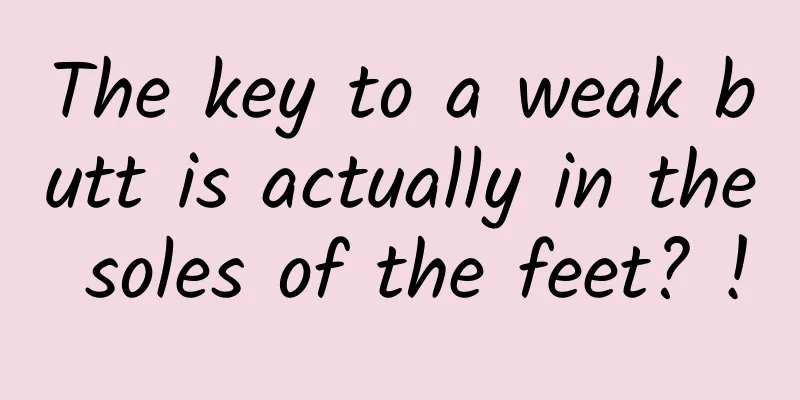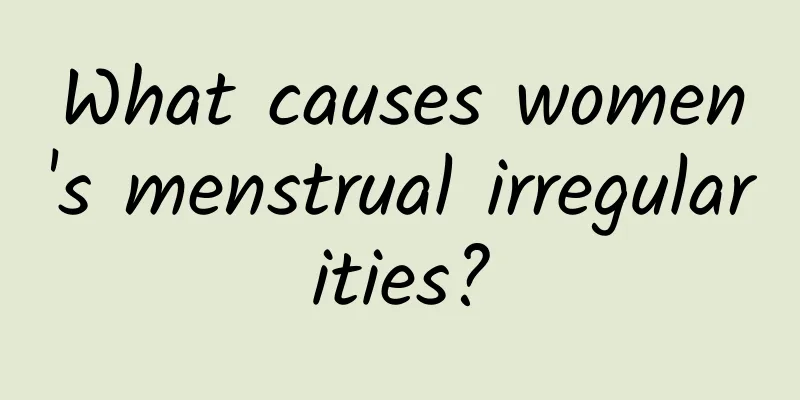The key to a weak butt is actually in the soles of the feet? !

|
What motivated you to start exercising? Whether it's for going to the beach, wearing a dress, having kids, or competing, whatever it is, doing it correctly and regularly can keep you healthy. An important part of health is posture, which requires flexibility, mobility, and stability to avoid sports injuries. To be effective, there are five key points, which are also the five biggest problems encountered by beginners: 1. Exercise intensity 2. Exercise 3. Core 4. Hips 5. Another one is... (will be explained at the end) The biggest exercise problem for beginners: 1. Insufficient exercise intensity and volume It is difficult to explain to you the true intensity of exercise. It does not mean that you only have to feel sore and weak in some parts of your body, nor does it mean that you only have to take a breath to have exercise intensity. It means that you may have both, and they must be very strong. The simplest way is to use the RPE scale, and it should be very objective (because boys tend to say they are not very tired, while girls tend to say they are very tired even if they are a little tired). The scale is from 1 to 10: 1 is close to the effort you need to use to change positions when lying on the beach under the sun, and 10 is when you are so tired that you fall to the ground and even if someone wants to draw your face with a marker, you will never want to get up again. Of course, it is not recommended for beginners to experience level 10 right away. Feelings such as nausea and dizziness will make you feel that it is a bad experience. However, if you are in good health and only exercise less than 5 times for a long time, that is one of the reasons why you cannot make progress and change! The amount of exercise refers to the amount of exercise you do once. Of course, 5 minutes is a bit too little. You can give yourself more time and spend more than 20 minutes to concentrate on doing it. However, if you don’t feel tired after two hours, it means the intensity of the exercise is not enough. Intensive exercise should make you tired quickly within an hour. If you only exercise one day a week, the amount of exercise will be too little. If you expect to make obvious progress in three to six months, you should require yourself to exercise in a planned manner on average two or three days a week! 2. In addition to physical fitness, the most important thing about athletic ability is your core and hips. This is one of the areas that beginners also need to learn the most. core: Many people misunderstand that bodyweight exercises or strength exercises are core training. In fact, what we need to understand is that the resistance of resistance training comes from our own body weight or additional weight, so our own body weight is bodyweight training, and additional weight is called weight training or weight training. Many parts of resistance training require core involvement, no matter what your training method is: local muscle hypertrophy, explosive power, whole-body functionality, agility and speed reaction, etc., all require core involvement, and even training together with the core. The core includes many deep and superficial layers, from the pelvic floor to the diaphragm. Just one or two movements or just training the abdominal muscles is not a complete core training. In fact, if you want to train your core well, you need to diversify your movements and train your whole body! Hips: It was mentioned before that using the buttocks is difficult for most people, and even Superman can't save your buttocks. Because modern civilization has caused most people to live a sedentary life for a long time and walk less, if they do not have the habit of exercising, their buttocks will easily not be used for a long time, causing muscle strength loss. There are many ways to test and activate the use of the buttocks. One way is to observe your buttocks by walking and using the soles of your feet. Humans are standing and walking animals, so the most important thing is the feet. Everything starts from the soles of the feet. From the movements of the soles of the feet, you can observe many body power chains, which affect the knee joints and connect the buttocks and core. (Editor’s note: The body’s kinetic chain refers to the use of the whole body in daily life. Going up and down stairs with handrails or pushing a revolving door while walking are all kinetic chains, not just relying on a single part to exert force.) Walking: If the steps are too small and incomplete, the movement of the soles of the feet will also be incomplete, and the power of the body to walk will be inefficient. If there are problems with walking, there will also be problems with running. Because running also requires the hips to exert force, weakness in the gluteus medius may lead to extended knee pain. If the foot at the back is not positioned far enough back when you walk, it means that the hip extension angle is too small, which means that the buttocks are not used often. You can check and correct this by looking at the soles of the feet. Everyone lifts their heels at different angles when walking. Seen from the back, the left side of the picture above is Low Gear and the right side is High Gear. If the back foot is not positioned far enough back, the heel is usually not lifted high enough and the range of motion of the big toe joint (1st MPJ) may be reduced. Why? Everyone's foot has a different posture when they are naturally relaxed, from left to right, Inversion (inversion), Neutral (neutral position), Eversion (eversion). Too much angle deviation means that some muscles are unbalanced with each other, which will cause compensatory force and affect the knee joints and hips. The eversion stance is relatively unstable and weak, and the mobility of the soles of the feet is usually poor, and the walking steps are prone to be too small. People who walk less or are accustomed to walking in small steps, people who do not know how to use their hips, or people who have poor flexibility may have this condition. However, there are too many reasons, so it is best to make an in-depth differential diagnosis for the individual. Inversion is more powerful and stable, but excessive inversion, combined with tight ITBS (iliotibial band) and TFL (tensor fascia latae), can also cause knee damage. There are many muscles and bones from the calf to the sole of the foot that control the normal operating angle and force output of the foot. Incorrect angles and forces will then affect the power chain above, causing a continuous impact like a domino effect. Simply put, in the five stages of walking gait, the foot will go from inversion → eversion → neutral position → neutral position → inversion. In these consecutive different positions, when taking the first step, the foot uses inversion to release force, then turns to eversion to receive and store energy, then returns to the natural neutral position, and then releases force to move forward. If there is a problem with foot control when walking, it is conceivable that there will be problems with running! Testing MPJ: If the foot is in an outward position and the arch is collapsed, the big toe joint will have very little range of motion. If the foot is adjusted to a natural position, the big toe joint will have more range of motion, which can improve the walking posture. (It is recommended that you ask someone else to help you measure, and relax and do not use force when measuring) Improving to a natural position requires professional adjustment of the tibia or the subtalar joint, which will be explained later. Of course, fascia relaxation can also help! Self-exercise - Short Foot: Adjusting the position of your foot when it strikes the ground can help raise the arch of your foot and engage your hips and core. Simple step-by-step instructions: one foot at a time, knees slightly bent, stand on the three points on the picture, activate the core of the pelvic floor, open your toes and press down on the floor to hold for ten seconds. To make it simpler, press a piece of paper or pen under your toes and ask someone to take it away. Your task is to hold it down with all your strength (you can also use banknotes, otherwise the banknotes will belong to someone else!). Feel whether your hips and core are activated at the same time. Please feel it carefully. Practice the "foot retraction exercise" more, and then try some single-leg movements to see if you can make further progress. It does not mean that you have to deliberately use a lot of strength, but whether you can integrate the "foot retraction exercise" techniques into these movements to make the overall movement better! "Foot retraction exercise" is a good way to help many people build the function of the soles of the feet and toes, helping to activate or improve the ability of the soles of the feet to connect with the hips and core, thereby helping the progress of other movements. The last and most important point about exercise that I haven’t mentioned before is patience! Some people make rapid progress in two months, while others need more than half a year. This is because everyone is completely different from beginning to end, with different ways of thinking, different physical fitness, different living habits since childhood and current lifestyles, which make the body's functions and composition different. But no matter what, it takes time to do it. I've encountered people who gave up after two months, and I've also encountered people who were very patient and told my coach happily a year later that I had some lines, and he would be very patient and keep working hard for these lines. Be patient with your body and patiently improve your concepts and ideas. This is the key to overall health! This article comes from: Muscle Mom Blog ※For more information, please visit the blog of Kinniku Mama |
Recommend
How much does it cost to completely cure threatened abortion?
As we all know, threatened abortion is a painful ...
Can I take Chinese medicine if I have pelvic inflammatory disease? Can I take Chinese medicine to treat it?
Pelvic inflammatory disease can be treated with t...
What exactly is painless abortion? What are the categories of painless abortion?
Abortion is a way to help women terminate pregnan...
Research: Tannic acid can fight against the new coronavirus! Nutritionist reveals: Grapes, red quinoa, and oleic acid are great for boosting immunity
To fight against COVID-19, we must first block th...
Some precautions for clinical pelvic inflammatory disease
Pelvic inflammatory disease seriously endangers t...
How long can I wash my hair after an abortion? How long can I wash my hair after an abortion?
When can I wash my hair after an abortion? This i...
Can Bartholinitis be cured?
Bartholinitis is a disease caused by long-term st...
What should I do if I have uterine fibroids? What are the women who are prone to uterine fibroids?
Uterine fibroids are a common disease in women of...
Cervical erosion is usually caused by improper surgical operation.
Cervical erosion is usually caused by improper su...
Office workers should be careful when eating snacks! These 5 types of snacks are super high in calories and should never be touched
When office workers feel hungry in the afternoon,...
What medicine is good for uterine fibroids? How to use medicine for uterine fibroids
The exact cause of uterine fibroids is still uncl...
How to diagnose premature ovarian failure in women?
Everyone cannot resist the changes that time brin...
Terrified by cows! Zhu Lilun: Use the most stringent standards to control
At a time when Chinese people are in a panic beca...
The most advanced treatment for vulvar leukoplakia
What is the most advanced treatment for vulvar le...
How much does it cost to treat vaginitis?
Vaginitis is a gynecological disease with a high ...









